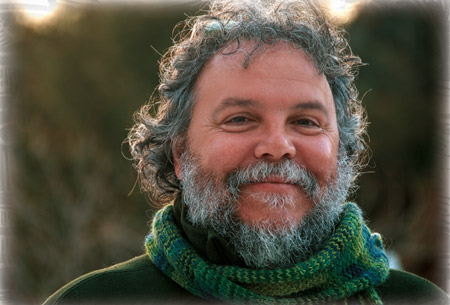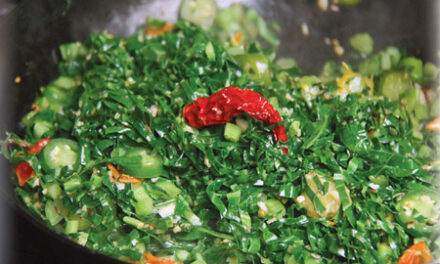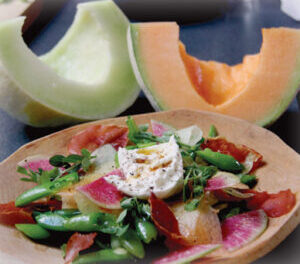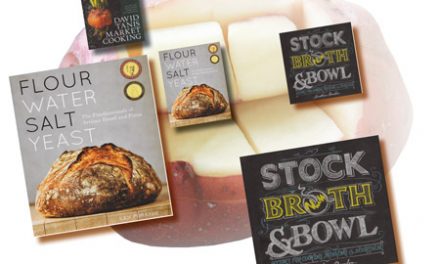By Paula Marcoux.

You don’t need to have a green thumb to get inspired by John Forti’s new book, The Heirloom Gardener.
In this alphabetic collection of bite-sized meditations, the Norwell, Massachusetts native offers entry points to everyone. Whether you’re the armchair reader who enjoys learning about surprising connections between human beings and the landscapes they often unwittingly create, or the one who, galvanized with that information, will tear out her lawn to restore a forest-margined pollinator garden on her property.
As a son of the deepest South Shore, John knows very well the landscape ideal inherited from post-World War II America: the suburban fantasy-world that spelt doom for natural habitats and historic landscapes alike, an edged and manicured stage set where “better living through chemistry” would produce a pest-free, hassle-free existence for deserving middle-class Americans.
While current evidence—in the form of topsoil-scraping, mulch-grinding, gravel-mining, and a full gallop to maximum buildout—shows that that juggernaut is still alive here and paying dividends, John chooses to celebrate the counter-movement that is just as incontrovertibly all around us. His life and work as a horticulturist, herbalist, garden historian, and Slow Food-agitator has put him at the intersection of communities that reject the strip-zoned, gated-community nightmare, maintained by outsourced property managers and their under-regulated cacophonous polluting machines and unknown chemicals, in favor of a landscape chosen by humans to foster humanity.
Take Action

Author John Forti envisions a world that evolves from choices; conscious choices. Photo of John Forti
For readers wondering how to take positive steps, John provides scores of entry points into thinking differently about our surroundings, simplifying what can seem overwhelming. Reading his essays, we realize that our everyday interactions with our own backyards are clotted with unconscious judgment and actions.
What gardener hasn’t unthinkingly selected the modified antifungal variety of an annual flower, sweated to root out perfectly edible greens from the grass, or composted useful trimmings from perennial herbs? He may compel readers to question some big-picture received wisdom— as in, “Why, exactly, do I have this big lawn?”; “Why is the flawless appearance of this apple more important to me than its flavor and texture?”; “Why did I just pay someone to bulldoze the swamp azalea and sweet pepperbush at the wetland margin of my property so that I can buy their less fragrant cousins at the nursery?”; and, perhaps closest to home for edible devotees, “Why do I buy food grown on the other side of the world, marketed to me by multinational corporations whose commitments to workers and the environment are in doubt, when I could support my neighbors and eat better by buying locally?”
The Future
Forti envisions a world that evolves from choices, conscious choices—the kind made by individuals and communities— as to how we wish to live and interact within the natural and cultural world we’ve inherited. With the perspective of a lifetime of meeting people and their places through travel and teaching, John finds hope for the future embodied in our current vista of dying malls and burgeoning farmers’ markets, in our unquenchable need to work in the garden and to taste the incomparable freshness of just-harvested foods. He is thrilled to see the foraging cultures he observed in youthful travels to Japan and Italy reawaken hereafter generations of dormancy. John celebrates the return of multi-layered local food communities as the antidote to monolithic consumer culture with its monetized distancing of both agriculture and nature.
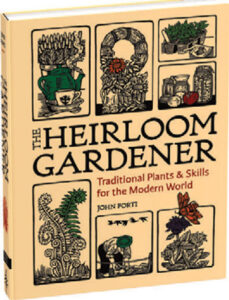
Rachel Montero taken from The Heirloom Gardener © Copyright 2021 by John Forti, illustrations by Mary Azarian. Published by Timber Press, Portland OR.
Just because the look and feel of this book is charming, and John’s writing, while exhortative, is calm and kind, don’t be fooled. The Heirloom Gardener is offering us cuttings from his little revolutionary hotbed. He is not calling for a return to the past, but rather urging us to throw off choices that have been made for us by those who stand to profit most. In demonstrating how easy it is to mistake for our own ideas and aesthetics that were in actuality foisted upon us, John returns to readers an agency they may not have been conscious of surrendering. His offering is that it’s up to you—a dandelion does not have to be a weed marring the dead zone of your perfect lawn; it can be a dish of fritters or greens, a bottle of wine, a spring tonic, or bee-food.
Paula Marcoux is a Plymouth food historian and the author of Cooking with Fire; and, yes, she believes we are all responsible for protecting the natural and historic landscapes we’ve inherited.

